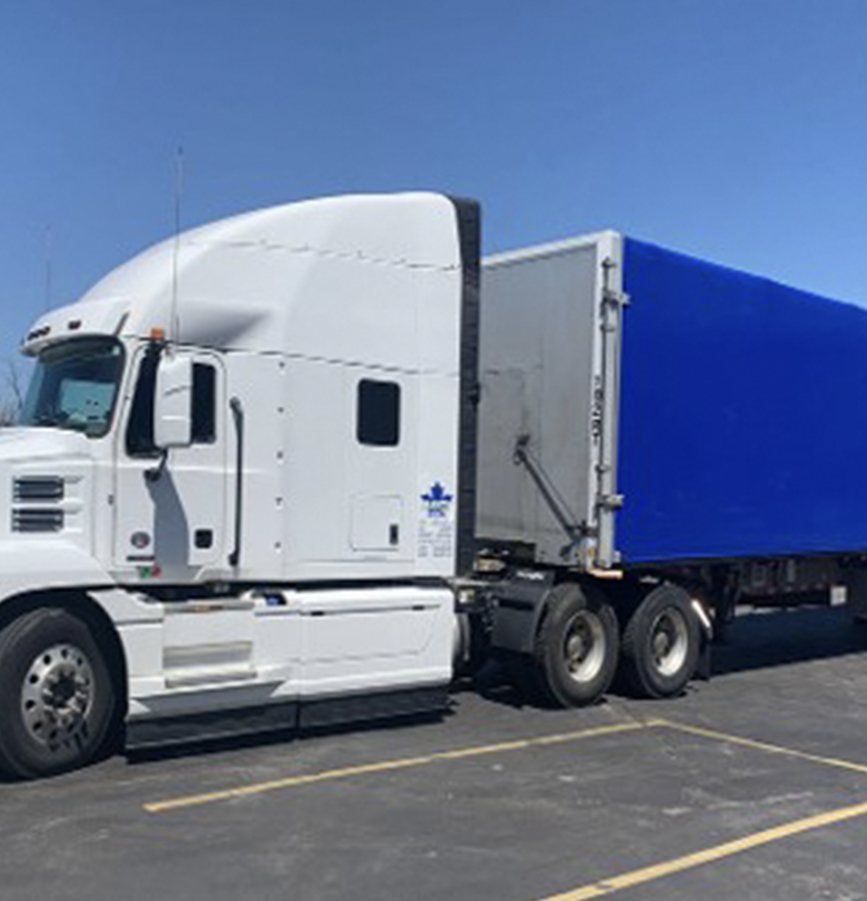Are you interested in embarking on a career as a truck driver in Canada? With its vast landscapes and thriving economy, Canada offers ample opportunities for individuals looking to pursue a career in the transportation industry. From delivering goods across provinces to navigating through scenic routes, truck driving can be a rewarding profession. Here’s a comprehensive guide on how to become a truck driver in Canada:
Meet Eligibility Requirements: Before pursuing a career as a truck driver, ensure you meet the eligibility criteria set by Canadian regulations. Generally, you must be at least 18 or 19 years old (depending on the province), hold a valid Class 1 or Class A driver’s license, and have a clean driving record. Additionally, you may need to pass a medical exam and meet specific residency or citizenship requirements.
Obtain a Commercial Driver’s License (CDL): To legally operate commercial vehicles such as tractor-trailers or trucks with a gross vehicle weight rating (GVWR) over 4,600 kg (10,000 lbs), you’ll need to obtain a CDL. The process for obtaining a CDL varies by province, but typically involves completing a written knowledge test and a practical driving test. You may also need to undergo training at a certified truck driving school.
Complete Truck Driver Training: While not mandatory in all provinces, enrolling in a truck driving school can greatly enhance your skills and job prospects as a truck driver. Truck driving schools offer comprehensive training programs that cover topics such as vehicle operation, safety regulations, map reading, and defensive driving techniques. Look for schools accredited by reputable organizations such as the Professional Truck Driver Institute (PTDI) for quality training.
Gain Experience: Building experience is essential for advancing your career as a truck driver. Many entry-level positions require a certain amount of driving experience, typically ranging from several months to a few years. Consider starting as a company driver or working for a trucking company that offers on-the-job training and mentorship opportunities. Use this time to hone your driving skills, familiarize yourself with different routes, and learn industry best practices.
Specialize if Desired: Truck driving offers various specialization opportunities depending on your interests and career goals. You may choose to specialize in long-haul trucking, regional or local delivery routes, hazardous materials transportation, refrigerated or flatbed transport, or oversized load hauling. Consider obtaining additional endorsements or certifications, such as a Dangerous Goods (D) endorsement or Air Brake (Z) endorsement, to expand your job prospects and earning potential.
Stay Updated on Regulations: As a truck driver, it’s crucial to stay informed about changes to transportation regulations, safety standards, and industry trends. Familiarize yourself with federal and provincial regulations governing hours of service, vehicle inspections, cargo securement, and driver licensing requirements. Stay connected with industry associations, participate in professional development opportunities, and attend relevant training seminars to stay current in your field.
Secure Employment: Once you’ve obtained your CDL and gained some experience, start exploring job opportunities in the trucking industry. Research trucking companies, freight brokers, and logistics firms in your area, and apply for positions that align with your skills and career objectives. Network with industry professionals, attend job fairs, and leverage online job boards and recruitment websites to find employment opportunities.
Maintain a Professional Image: As a truck driver, professionalism and reliability are essential qualities that can set you apart in the industry. Maintain a clean driving record, adhere to safety regulations, and prioritize punctuality and customer service. Take pride in your appearance and the condition of your vehicle, and communicate effectively with dispatchers, shippers, and receivers to ensure smooth operations.
Continuously Improve: The trucking industry is dynamic and constantly evolving, so it’s essential to embrace lifelong learning and continuous improvement. Seek feedback from supervisors and colleagues, identify areas for growth, and proactively pursue opportunities for professional development and skills enhancement. Consider pursuing advanced certifications, such as a Transportation of Dangerous Goods (TDG) certification or a Commercial Vehicle Inspection (CVI) certification, to further distinguish yourself in the field.
Stay Safe on the Road: Safety should always be your top priority as a truck driver. Practice defensive driving techniques, obey traffic laws, and maintain a vigilant attitude while behind the wheel. Take regular breaks to combat driver fatigue, inspect your vehicle before each trip, and use safety equipment such as seat belts and reflective clothing as required. Stay informed about weather conditions and road closures, and adjust your driving accordingly to ensure the safety of yourself and others on the road.
By following these steps and staying committed to professional growth and safety, you can embark on a successful career as a truck driver in Canada. Whether you’re drawn to the open road, the sense of independence, or the opportunity to contribute to Canada’s thriving economy, truck driving offers a fulfilling and rewarding career path for those with a passion for transportation and logistics.













